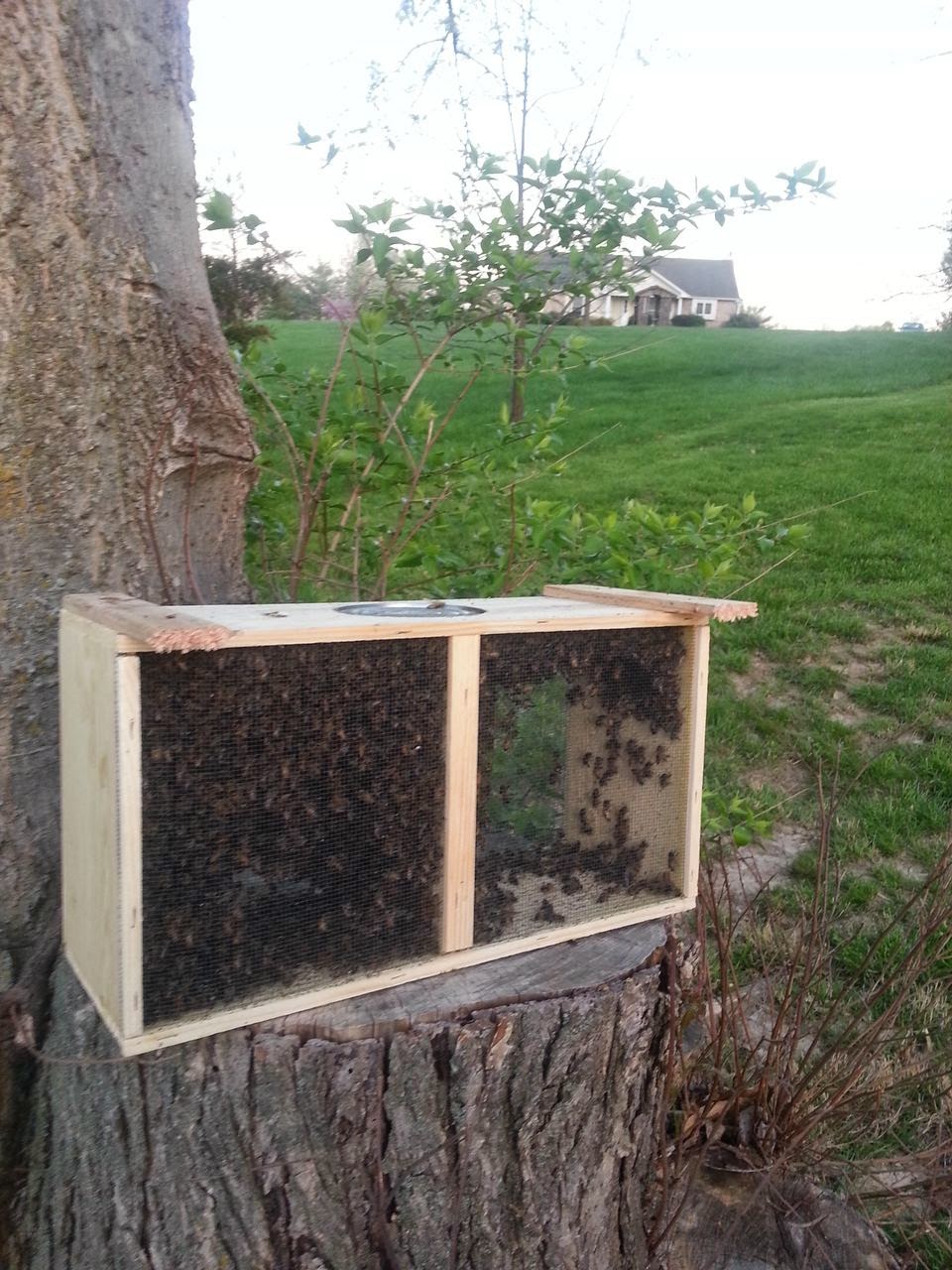After months and months of waiting, I finally got my package of honey bees on Tuesday! It was basically the best Earth Day ever. Sky Hive is finally up and running and I couldn't be more happier. I feel like the biggest nerd in the World! I took some photos of the installation process (they aren't the best quality, but they will do the job). Surprisingly enough, installing a package wasn't the least bit difficult. However, it took some getting used to having several bees crawling all over your body and buzzing around your face. A veil, suit, and gloves are a must! Enjoy the photos!
 |
| Setting up the bee yard for the package installation |
 |
| My 3lb package of Italian honey bees. The packaged bees normally come in a wooden box with two screen sides, a circular cut in the top where a metal can full of sugar syrup sits, a queen cage dangling inside, and approximately 10,000 or so worker bees and a few drones. |
 |
| Once you have about half of the frames taken out of the bottom super, you are ready to start the installation process. I started by opening the package, removing the can just enough to slide out the queen cage. You immediately replace the metal can to keep the bees from flying out. |
 |
| You need to carefully examine the queen cage. You won't be able to get every bee off the cage. The ones you see on the queen cage are most likely her attendant bees. They keep her fed and cleaned within the package and within the hive as well. First you need to see if your queen is actually alive (thank goodness, mine was). Check to make sure the queen isn't limping, walking slow, or acting abnormal. Mine was zooming everywhere inside the cage and looked perfectly healthy. |
 |
| Once you examine the queen and deem her fit to rule your colony, you're ready to move on. Some queen cages have two holes, one on each end on the cage, the top or bottom. My cage only had one hole at the bottom. Placed inside the hole is typically a small cork and a piece of sugar candy. If yours comes with a piece of candy your lucky, mine did not. However, it didn't really make things that difficult. Luckily, my parents had some marshmallows on hand. I simply stuffed a marshmallow over the hole to block the queen from coming out. This prevents the queen from being released into the colony too early. Instead, the colony will eat through the marshmallow and release the queen on their own time. After you ensure the entrance is plugged with an edible door, you simply hang the queen cage between a few frames in the bottom super. |
 |
| After you hang the queen cage between frames, you're then ready to install the rest of the package into the hive. First, I sprayed the screened sides of the package with sugar syrup. The sugar syrup calms the bees, distracts them, and makes them sticky, which allows for an easier installation process. Most people suggest that you first shake out a handful or so of bees over the area where you hung the queen cage. It alerts the bees of the queen's presence, her location, and allows them to start becoming accustom to her pheromones, which ultimately leads to her release from the cage. Then you can disperse the rest of the package throughout the hive. Since I removed five frames, I dumped most of the bees into the empty space left by the removed frames. |
 |
| Once most of the bees are shaken out of the wooden box, place the wooden box with the top hole facing toward the entrance of the hive. It allows the few straggler bees to escape the box, smell the pheromones of their sisters and find their way to the entrance of the hive. Before placing the inner cover over the bottom super, I first laid a pollen/protein patty over the top of the frames. This gives the bees a food supplement giving them the strength and nutrients to start building up comb. |
 |
| I then inverted the inner cover and placed it over the bottom super. I also added a bucket feeder for sugar syrup feeding. The lid of the feeder has several tiny holes poked in the lid and when flipped over it causes a vacuum within the bucket which only allows syrup to drip out when the bees lick it from the holes. |
 |
| I placed the bucket feeder over the hole of the inner cover which allows the bees to crawl up to the perforated lid and feed off the syrup. Then most experts suggest you use an empty deep super to conceal the feeder to prevent robbing and to further protect your bees and hive. |
 |
| Finally, I placed the outer cover on top of the hive and cleaned up. Everything went very smoothly and quite quick! |
~Nick




No comments:
Post a Comment